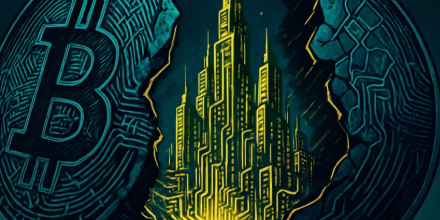Trump’s Return Could Ignite Crypto Market Growth, CleanSpark CEO Predicts After SEC Shift
As crypto firms ease past reporting hurdles, legacy players eye bitcoin and mining ventures gain steam amid shifting rules, hinting at major asset inflow should a returning leader back the sector.

Key Takeaways:
- Political shifts have eased accounting rules that once hampered crypto custody.
- Repeal of the SEC’s custody bulletin has drawn traditional finance back to bitcoin.
- Trump‑linked crypto ventures add another layer to market dynamics.
- Long‑term growth will hinge on the shape of new U.S. digital‑asset rules.
In an April 17 interview with CNBC, CleanSpark CEO Zachary Bradford said President Donald Trump’s policies have been a ‘net positive’ for digital assets.
He attributed the momentum to fresh institutional interest triggered by Congress’s repeal of SEC bulletin SAB 121 earlier this month.
Trump’s Second Term Is A Net Positive, CleanSpark CEO Says
“Since the administration took office, it’s been a net positive for our industry and a lot of this comes from the regulatory landscape,” Bradford told CNBC’s Talia Kaplan on Thursday .
“In the prior years, you know the Bitcoin industry and the crypto industry as a whole, we had a lot of headwinds that we were facing,” Bradford continued. “We find ourselves with some tailwinds at this point.”
The crypto entrepreneur pointed to the repeal of the United States Securities and Exchange Commission’s (SEC) controversial bulletin, SAB121 – which required financial institutions custodying digital assets to list them as liabilities on their balance sheet – as having the “highest impact” for the crypto sector.
“As a result, there’s now more traditional institutions becoming interested in holding Bitcoin and interacting with it,” he added.
Trump Sons Invest in New BTC Mining Operation
Bradford’s comments come just weeks after crypto infrastructure firm Hut 8 announced that it would be launching Bitcoin mining firm American Bitcoin with investments from Eric Trump and Donald Trump Jr.
When asked by Kaplan if he was “fazed” by the Trump-affiliated crypto company’s most recent announcement, Bradford reaffirmed that CleanSpark would “continue doing what we do best” as the Bitcoin miner “with the highest operational excellence in the industry.”
“The scale we’re operating at will take a long time for anybody to catch up on,” he said.
Whether Bradford’s vision materializes now hinges on the substance of America’s forthcoming crypto rulebook: clear guardrails could channel mainstream capital into Bitcoin mining and beyond, while prolonged regulatory drift risks eroding the very tailwinds he sees today.
Frequently Asked Questions (FAQs)
Government-held bitcoin from forfeitures is pooled into a non-selling reserve subject to audits and management guidelines. It diversifies assets without new spending but prompts concerns over liquidity and governance.
Even after SAB 121’s repeal, firms must address SAB 122 requirements, evolving SEC and CFTC roles, and secure custody systems. Regulatory gaps and varied state laws continue to complicate institutional entry.
By issuing supportive orders and engaging regulators, the White House improved market outlook and helped miners secure capital for expansion. Yet, mining investment and sentiment remain sensitive to future policy clarity.
Disclaimer: The content of this article solely reflects the author's opinion and does not represent the platform in any capacity. This article is not intended to serve as a reference for making investment decisions.
You may also like
IOTA partners with top global institutions to build Africa’s “digital trade superhighway”: a new $70 billion market is about to explode
Africa is advancing trade digitalization through the ADAPT initiative, integrating payment, data, and identity systems with the goal of connecting all African countries by 2035. This aims to improve trade efficiency and unlock tens of billions of dollars in economic value. Summary generated by Mars AI. The accuracy and completeness of this summary are still being iteratively updated.

Panic selling is all wrong? Bernstein: The real bull market structure is more stable, stronger, and less likely to collapse
Bitcoin has recently experienced a significant 25% pullback. Bernstein believes this was caused by market panic over the four-year halving cycle. However, the fundamentals have changed: institutional funds such as spot ETF are absorbing the selling pressure, and the structure of long-term holdings is more stable. Summary generated by Mars AI. The accuracy and completeness of this content are still being iteratively improved.

Young Bitcoin holders panic sell 148K BTC as analysts call for sub-$90K BTC bottom

Rare Bitcoin futures signal could catch traders off-guard: Is a bottom forming?

